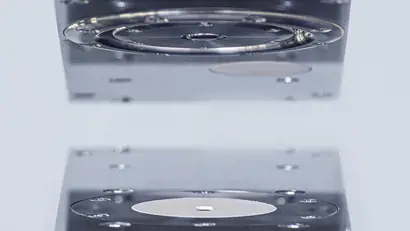Valmet IQ Silicone and Adhesive Measurement

The Valmet IQ Silicone and Adhesive Measurement (IQ Silicone and Adhesive) measures silicone weight, adhesive weight, and moisture content. The infrared wavelengths, calculation algorithms, optical construction and measurement speed are optimized for fast moving webs.
Save on silicone and adhesive from better online measurements and quick on-spec quality after startups
Reduce profile variations and achieve higher machine runnabilty with lower break rates
Improve roll quality with less silicone and adhesive streaks using advanced process diagnostics

Infrared technology designed for coating and laminating
The Valmet IQ Silicone and Adhesive is designed for demanding silicone coated release liners and self-adhesive laminating applications. A single-sided measurement of silicone and adhesive weights, the sensor’s infrared light is absorbed at specific wavelengths by constituents in the sheet.
Analyzing backscattered near infrared (NIR) and middle infrared (MIR) light, the Valmet IQ Silicone and Adhesive directly reads the amount of silicone and adhesive on the sheet. The sensor also simultaneously measures surface moisture and clay amount.
Better silicone and adhesive control
The Valmet IQ Silicone and Adhesive measures specific chemical bonds common to all silicone and adhesive types. This makes it possible to accurately and independently measure silicone without any disturbance of the clay in base paper.
Accurate scan averages and profiles measured by IQ Silicone and Adhesive provide a solid foundation for silicone and adhesive controls. True silicone and adhesive profiles at the highest resolution and scanning speed lead to more accurate and stable on-sheet measurements and more precise control of MD and CD properties.
Accurate from the first scan
Dedicated DSP processors in the sensor ensure high signal to noise ratio, while separate detectors for NIR and MIR provide the best sensitivity for component analysis.
The sensor’s internal standardization, built-in diagnostics and temperature stabilization techniques ensure accurate readings in hot and dirty environments. Normal sheet flutter also does not affect readings. Digital signal processing and factory pre-calibration ensure superior sensor accuracy from the first scan.